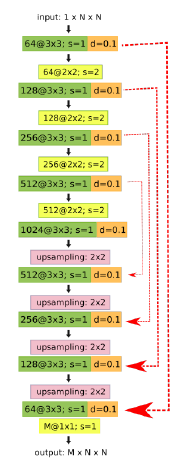A TensorFlow based project for semantic segmentation with the Oxford-IIIT Pet Dataset; a 37 category pet dataset with roughly 200 images for each class with pixel level trimap segmentation.
- Load and transform the dataset
- Resize rgb images and single channel segmentation masks to 128x128 pixels
- Build the U-Net model with the encoder and decoder
- Train the model and monitor evaluation metrics i.e., accuracy and categorical cross-entropy loss
- Save model weights for the best results
- Load and evaluate model using the test set
- Open a terminal or comand prompt and create a conda virtual environment using the
environment.ymlfile:conda env create -f environment.yml - Activate the environment:
conda activate semantic_segmentation - Clone the git repository:
git clone https://github.com/HassanMahmoodKhan/Semantic-Segmentation.git - Run the project:
python src/main.py - If you wish to install the project dependencies using the
requirements.txtfile. Use thepippackage manager:pip install -r requirements.txt
To view the output log file, refer to the output.log in the output folder.
To view the training and validation accuracy and loss figure, refer to the assets folder.
This project is licensed under the Apache 2.0 License. See the LICENSE file for details.
- Novikov, A. A., Lenis, D., Major, D., Hladůvka, J., Wimmer, M., & Bühler, K. (2017). Fully Convolutional Architectures for Multi-Class Segmentation in Chest Radiographs. ArXiv. /abs/1701.08816
